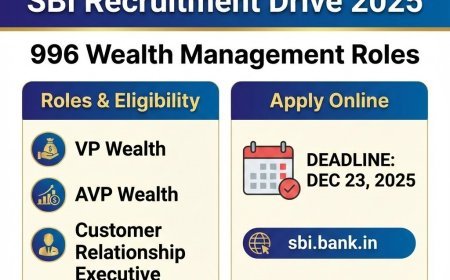NISM-Series-XV - Research Analyst Certification Exam - 8
NISM-Series-XV - Research Analyst Certification Exam - 8
Explore Additional Mock Tests Here
Q 1. What is the regulatory authority for Equity Shares?
a) Reserve Bank of India (RBI)
b) Securities and Exchange Board of India (SEBI)
c) Regulators under the Companies Act
d) Ministry of Finance
e) Stock Exchanges
Q 2. What is the unit of pricing for the IT services/BPO/KPO sector?
a) Quantity of Goods Sold
b) Value of Loan
c) Number of Transactions
d) Full-time equivalent (FTE) per month
e) Current Account and Savings Account (CASA) ratio
Q 3. 4: How is risk generally associated with return on investments?
a) Risk and return are unrelated
b) Higher risk is associated with lower return
c) Risk and return are always equal
d) Higher risk is associated with higher return
e) Lower risk is associated with lower return
Q 4. What distinguishes an Initial Public Offer (IPO) from other public issues in the primary market?
a) IPOs are exclusively for retail investors.
b) IPOs involve the first sale of a company's common shares to the public.
c) IPOs are not regulated by SEBI.
d) IPOs allow existing investors to offer their shares to the public.
e) IPOs have no eligibility criteria for raising capital.
Q 5. In the context of SWOT analysis, what are the opportunities and threats?
a) Internal factors affecting a company
b) Strengths and weaknesses of a company
c) External conditions impacting a company
d) Financial positions of a company
e) Market trends and customer preferences
Q 6. How does a higher Sharpe Ratio indicate superior performance?
a) Higher returns with lower risk
b) Lower returns with lower risk
c) Higher returns with higher risk
d) Lower returns with higher risk
e) Consistent returns over time
Q 7. What is the role of Proxy Advisory services firms in the securities market?
a) Executing cash, tom, and spot trades on behalf of investors
b) Managing the settlement process for institutional investors
c) Advising investors on exercising their rights and voting recommendations
d) Engaging in over-the-counter (otc) trades outside the stock market
e) Providing financial planning services to Ultra High Net-worth Individuals (UHNIs)
Q 8. Where can an analyst find information about a company's ESG disclosures as per SEBI's Business Responsibility and Sustainability Report (BRSR) parameters?
a) Competitors’ website
b) Ministry of Corporate Affairs website
c) Conference Call transcripts
d) BRSR Report
e) Research Report from Credit Rating Companies
Q 9. What is the primary purpose of the sample checklist for investment research reports?
a) To confuse readers with unnecessary details.
b) To provide fixed and unmodifiable questions.
c) To encourage emotional decision-making.
d) To offer indicative questions for qualitative and quantitative analysis.
e) To hide the decision-making trail.
Q 10. What does Dividend Per Share (DPS) represent?
a) Net profit available to equity owners
b) Earnings from previous years
c) A portion of the profit distributed to shareholders
d) Earnings available to serve both equity and debt holders
e) Trailing earnings
Q 11. What is included in the "Employee cost" line item in the profit and loss account?
a) Gradual and permanent reduction in the value of assets
b) Salaries, benefits, notional expenses towards stock-based compensation granted, and staff welfare expenditure
c) Amount spent towards the purchase of goods for resale
d) Changes in inventory of WIP and finished goods
e) Purchases plus opening stock of raw materials minus closing stock of raw materials
Q 12. According to Regulation 3(1) of the SEBI (Prohibition of Insider Trading) Regulations 2015, when can an insider communicate unpublished price-sensitive information?
a) Anytime, as long as it is shared with other insiders.
b) Only during office hours.
c) For the furtherance of legitimate purposes, the performance of duties, or discharge of legal obligations.
d) Only during official company meetings.
e) When seeking personal gains from trading.
Q 13. Why might companies in emerging markets prefer to issue bonds in foreign currencies?
a) To eliminate interest rate differentials
b) To avoid foreign currency risk
c) To benefit from higher interest rates
d) To reduce the benefits of interest rate differentials
e) To issue bonds in their home currency
Q 14. What is the benchmark for the Debt/Equity (D/E) ratio, and why is it important?
a) A D/E ratio of 1 or less; suggests a balanced financial structure.
b) A D/E ratio of 5 or more; indicates financial stability.
c) No benchmark; it depends on the industry and project details.
d) A D/E ratio of 0.5 or less; reflects strong liquidity.
e) A D/E ratio of 2 or more; signifies high profitability.
Q 15. How can an individual obtain certification for research analysts under Regulation 7(2)?
a) Automatically provided upon registration.
b) By completing a one-year program with any recognized institution.
c) Obtaining any certification from a local university.
d) Completing a Post Graduate Program in the Securities Market from NISM.
e) No certification is required for research analysts.
Explore Additional Mock Tests Here



